- Trusted Brand Used by 1000s
- 100% Happiness Guarantee
- Free and Easy Returns
- VIP Facebook Community
💵 Win $500 CASH to spend on Black Friday - ANYWHERE
2025 Diaries - shop now! 🤗
🖤 BLACK FRIDAY SALE | Save up to 80% 💥🔥
📢 Order before 16th Dec to get it before the new year. More Holiday announcements
🔥 Free 2024 PDFs

Welcome guest
- Bundle and Save ➯
2025 Diaries
- • All Early Childhood
- • Long Day Care
- • Preschool
- • Kindergarten
- • Family Day Care
- • Occasional Care
- • Calendars
- • Children's Journals
- • Indigenous Resources
- • Duplicate Books
- • Posters and Cards
- • Custom Designs
- • Printables
- • Educator Favourites
- • Educational Leader Bestsellers
- • Nominated Supervisor Go Tos
- • Director Must Haves
- • Cook Faves
- • Programming and Reflection
- • Directors, Office Admin
- Black Friday! 🔥
- 2024 Run Out 🏃♀️
- Product Quiz
- How To Articles
- Download e-Book
- Programming Diary Help
- Track Your Order
- Community Group
A Guide to Writing Observations in Early Childhood Education
Butler Diaries @ Sep 18, 2023
The practice of documenting observations is a cornerstone in Early Childhood Education and Care (ECEC). These observations serve multiple purposes, from mapping a child's developmental milestones to identifying their interests and skills. Moreover, observations lay the groundwork for effective programming and are instrumental in maintaining quality as delineated by frameworks like the Early Years Learning Framework (EYLF) and the National Quality Standards (NQS).
Importance of Observations
Observations are vital for creating a personalised learning experience for each child. They help educators discern the child's social, emotional, and cognitive development, as well as their learning styles. By comparing these observations against frameworks like EYLF and NQS, educators can design effective programs that adhere to recognised standards of quality and excellence.
Link to EYLF and NQS
The EYLF emphasises a vision where "all children experience learning that is engaging and builds success for life". Observations directly contribute to this by identifying what engages a child. Further, NQS, under Quality Area 1—Educational Program and Practice, highlights the necessity for educators to "base their programs on the interests and needs of each child."
The Process of Writing Observations
1. setting and timing.
The first step is choosing the right setting and time. Ideally, this should be a natural setting where the child feels comfortable and acts spontaneously. This could be a spontaneous experience or learning captured during a programmed experience.
Observations from a Variety of Sources
Observational data should be gathered from a diverse range of sources to build a more complete picture of each child's development and learning journey. While individual observations by an educator provide valuable insights, corroborating these findings with observations from peers, family members, and even the children themselves, can lend a more comprehensive view. Methods can range from direct observations and individual portfolios to input from family interviews and peer reviews. We help you capture a variety of observations using our Individual Observations Book and Children's Journals .
This multi-faceted approach aligns well with the EYLF's principle of 'Ongoing Learning and Reflective Practice', encouraging a holistic understanding of each child. It also resonates with NQS Quality Area 1, which encourages a 'cycle of planning' that incorporates a diverse array of observational sources. Use the Individual Observations Book and Children's Journals in conjunction with the Weekly Programming and Reflection Diaries to show your cycle of planning.
By employing a diverse range of observation sources, you ensure a richer, more nuanced understanding of each child's developmental needs and learning styles. This, in turn, enables you to create more targeted and effective programming. In this way, the observational process becomes not just a measure of where a child is at, but a roadmap for where they have the potential to go.
2. Objective Description
Focus on capturing an objective account of the event. Describe what the child is doing, saying, and any interactions they are having. Steer clear of personal opinions or interpretations at this stage. Here you are simply recounting what occurred. You can use quotes to capture children's verbal communication.
3. Reflect and Analyse
After capturing the raw observations, the next step is to reflect and analyse the data. This is where the frameworks like EYLF come into play. Align your observations with the Learning Outcomes outlined in this framework.
Suppose you observe a child engaged in a block-building activity. You note the following:
Objective Description: "Jamie carefully stacks blocks, counting aloud, 'One, two, three'."
Reflect and Analyse: This can be linked to EYLF Learning Outcome 4 — "Children are confident and involved learners" and Learning Outcome 5 — "Children are effective communicators."
- In your reflection, you should also consider how you could build on Jamie's learning and how this observation contributes to what you know about Jamie as a whole.
What about Theorists?
An enriching layer of depth can be added to your observations by linking them to the work of educational theorists. This not only provides a conceptual foundation for your observations but also reinforces the pedagogical approaches in line with both EYLF and NQS. For example, if a child shows a proclivity towards imaginative play, you might link this behaviour to Vygotsky’s theory on the Zone of Proximal Development, suggesting that imaginative play is a key part of cognitive development. Or perhaps, a child showing significant autonomy in choosing activities can be linked to Erikson’s stages of psychosocial development, particularly the 'Autonomy vs. Shame and Doubt' stage. Here is a cheat sheet that may help you, "Linking Theorists to the EYLF Outcomes."
Integrating theoretical perspectives into your observations is an effective way to demonstrate the deep understanding and meticulous approach you apply to Early Childhood Education and Care. It adds an extra layer of validation to your observations and shows alignment with Quality Area 1 of the NQS, which highlights the role of educational programs in stimulating and engaging the children's minds.
Incorporating theorists is not merely an academic exercise; it's a compass that guides educators in providing targeted and effective learning experiences. It's another step towards fulfilling our collective mission: to provide a nurturing environment where each child’s learning journey is not just documented, but celebrated.
The Key to Observations: Meaning
Observations in Early Childhood Education and Care are more than mere snapshots of a child's actions or utterances; they should offer meaningful insights into a child's developmental journey. Meaningful observations delve deeper into understanding a child's interests, strengths, and areas for growth. They should be relevant to both the child's immediate learning and their long-term development, and be capable of informing targeted, individualised programming.
Being meaningful also involves focusing on significant moments, not just interesting or entertaining ones. It means looking for patterns over time rather than isolated incidents, and aligning these patterns with the Learning Outcomes in the EYLF and Quality Areas in the NQS. This way, you’re not just observing to fulfil a requirement, but actively engaging in a process that has a meaningful impact on a child’s educational trajectory.
As you gather these meaningful observations, you are not only complying with standards but also demonstrating a dedication to the rich complexities of each child’s development. In capturing the essence of each child's journey, you're making a vital contribution to the field of Early Childhood Education and Care—ensuring that every experience is not just documented but deeply understood and celebrated.
Documenting Observations
Utilising the 'Butler Method', our specialised diary solutions can streamline this process for you. By integrating the EYLF and NQS frameworks into our documentation system, we make it easier for ECEC professionals to map out observations to specific Learning Outcomes and Quality Areas.
Use the Individual Observations Book and Children's Journals to capture your observations. These are designed to be used in conjunction with the Weekly Programming and Reflection Diaries that capture your program and show your cycle of planning. Educational Leaders can use the Educational Leader Diary to support educators in their documentation.
Final Thoughts
Writing observations in Early Childhood Education and Care is a nuanced task that requires meticulousness and dedication. When conducted correctly and backed by the guidelines laid down by EYLF and NQS, they become powerful tools for quality education and care.
By grounding your observation practices in these frameworks, you ensure that you are not just documenting a profession but celebrating it. With the right tools and knowledge, every child's unique journey can be recognised, nurtured, and celebrated.
For a more comprehensive guide and specialised diary solutions, please explore Butler Diaries. We are committed to making your professional experience in ECEC organised and streamlined, ensuring that your focus remains on the child's developmental journey.

Latest Articles
How do i create a play-based learning program.
Butler Diaries @ Oct 21, 2024
Creating a play-based learning program is not just about facilitating play but harnessing its potential to foster holistic development. In this post, we’ll guide you through creating a play-based learning program and offer tips for recording it effectively.
Engaging Parents in Children’s Programs: 10 Strategies for your Service
Butler Diaries @ Nov 11, 2024
The role of loose parts in ECEC and how it links with EYLF
Butler Diaries @ Oct 23, 2024
Loose parts play in Early Childhood Education and Care (ECEC) offers a rich opportunity for children to engage in open-ended, creative, and exploratory play. This type of play allows children to manipulate and transform materials in a variety of ways, fostering key developmental areas. Linking loose parts play to the EYLF, it strongly supports children's learning in several key learning outcomes. Here’s how loose parts play promotes children's learning, aligned with the EYLF...
Featured Products


Individual Observations Duplicate Book EYLF/MTOP V2
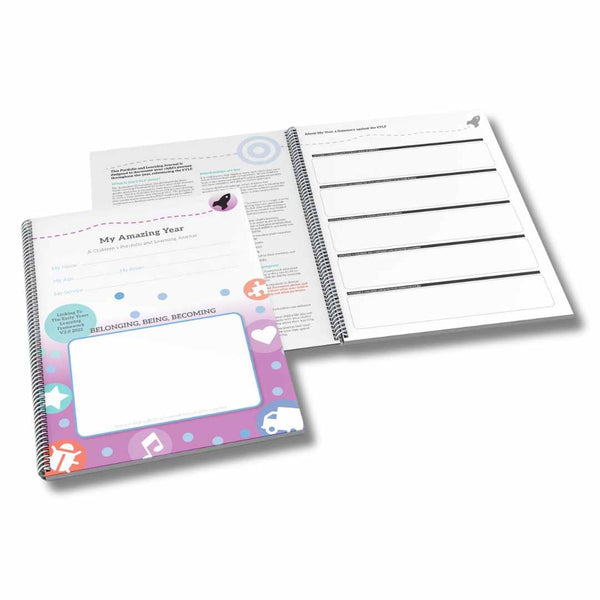
My Amazing Year - Portfolio Learning Journal for Children A4
Regular price $ 19.95 Sale price $ 14.99
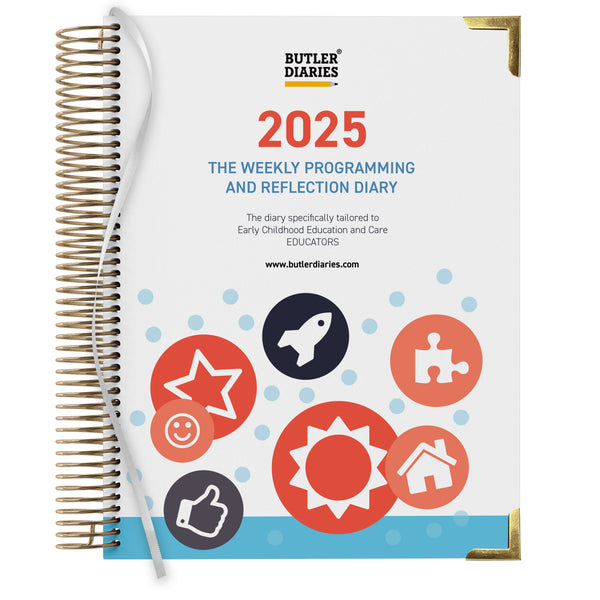
2025 Weekly Programming and Reflection Child Educator Diary - Hard Cover Spiral Bound
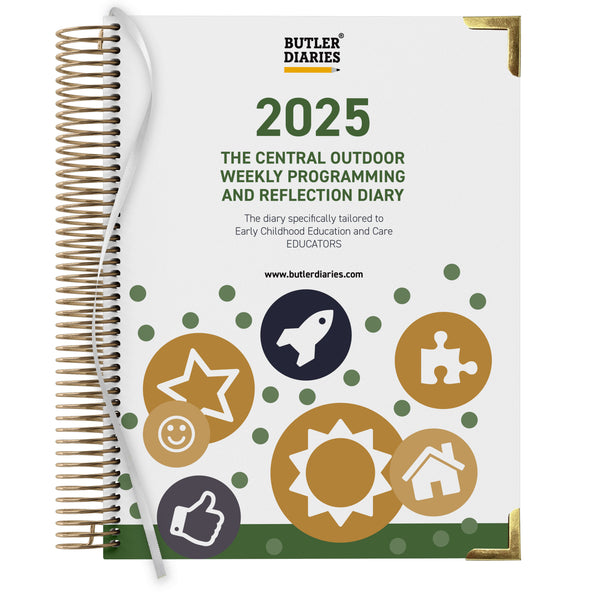
2025 Central Outdoor Weekly Programming and Reflection Diary - Hard Cover Spiral Bound
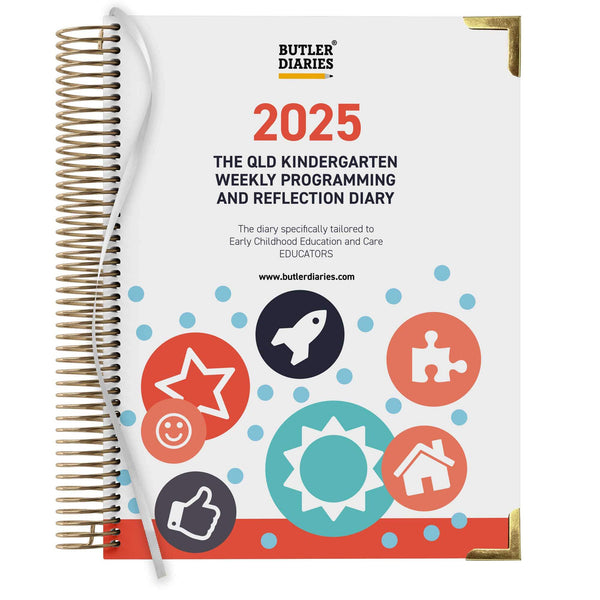
2025 QLD Kindy Weekly Programming & Reflection Diary - Hard Cover Spiral Bound
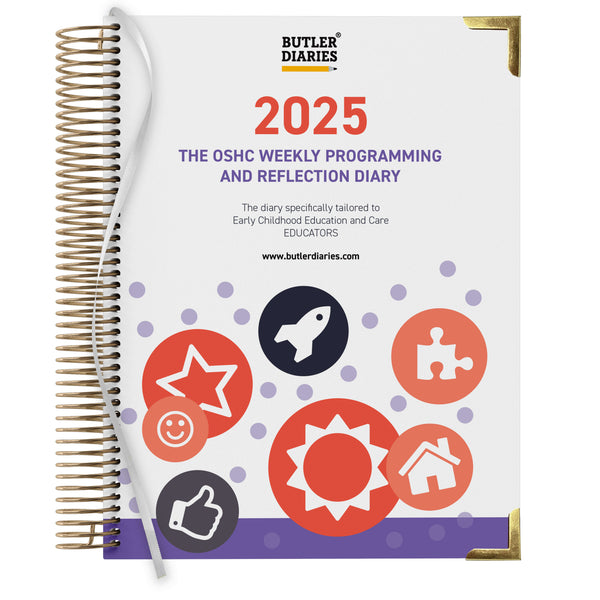
2025 OSHC Weekly Programming & Reflection Diary - Hard Cover Spiral Bound

2025 Educational Leader Diary - Hard Cover Spiral Bound
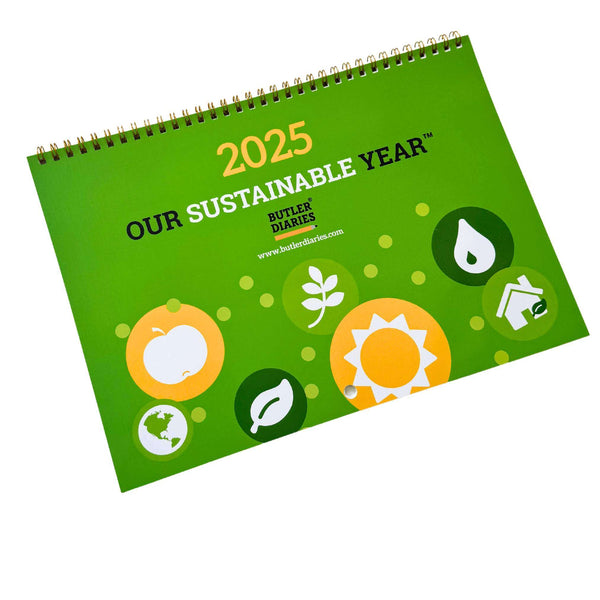
2025 Our Sustainable Year Wall Calendar
Acknowledgement of country.
Butler Diaries acknowledges and pays respect to the past, present and future Traditional Custodians and Elders of this nation and the continuation of cultural, spiritual and educational practices of Aboriginal and Torres Strait Islander peoples.
Join the 35,000+ customers who have trusted Butler Diaries to help them in their roles.
Your Cart is empty Let's fix that
Search our store
Popular searches.
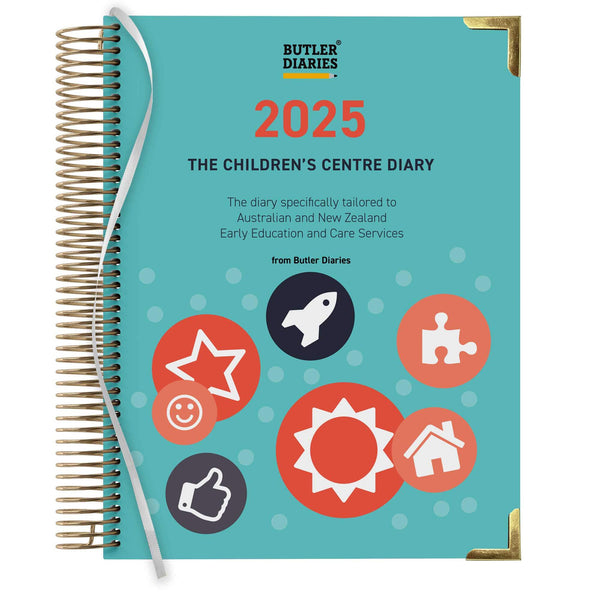
2025 Children's Centre Diary - Hard Cover Spiral Bound
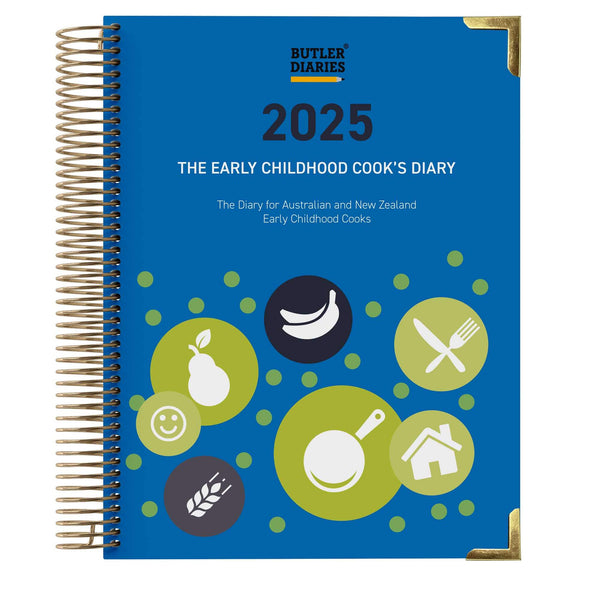
2025 Early Childhood Cook's Diary - Hard Cover Spiral Bound
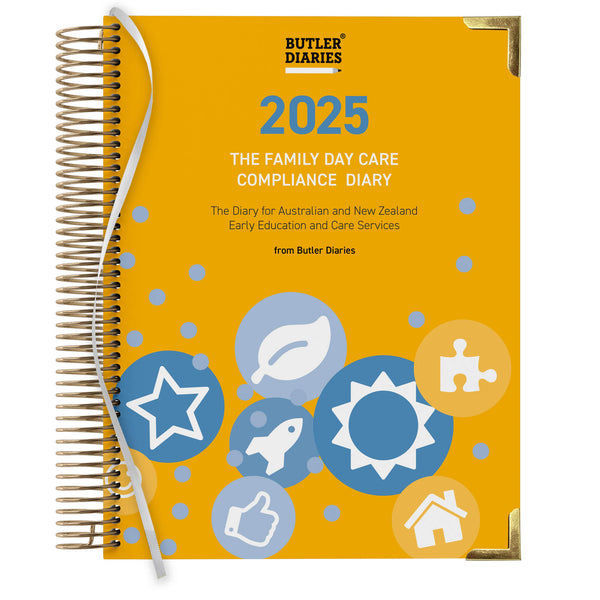
2025 Family Day Care Compliance Diary - Hard Cover Spiral Bound

2025 Nominated Supervisor Diary - Hard Cover Spiral Bound
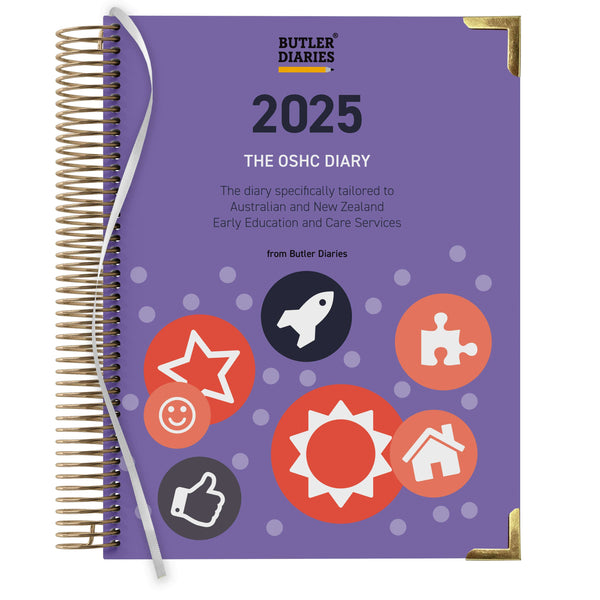
2025 OSHC Diary - Hard Cover Spiral Bound

2025 Our Culturally Responsive Year Wall Calendar

2025 Special (Limited) Edition Weekly Programming and Reflection Child Educator Diary - Hard Cover Spiral Bound

2025 The Tradie Diary - Leather Hard Cover Spiral Bound
Your wishlist.
Your wishlist is currently empty

IMAGES
VIDEO